Summer 2022
To read more about the work that PLF is doing, visit pacificlegal.org.
As a child, the only time my extended family got together was for meals. For Easter, we’d traipse over to Duff’s Smorgasbord at JANAF Shopping Center in my Virginia hometown—where, as a growing boy, I quickly learned the wonders of an all-you-can-eat buffet.
We’d celebrate the Fourth of July at my grandmother’s home, where we gathered for a picnic, replete with the time-tested grilled American favorites of hot dogs and hamburgers. I’d swim and play lawn games with my cousins, then top it off with apple turnovers courtesy of my German great-aunt Trudy.
The final time of the year was on Christmas Eve. There we had typical fare: turkey, stuffing, mashed potatoes, and gravy—a combination I still crave every holiday, usually all mixed together. Not content with three or four plates of food, I’d always leave room for my grandfather Gary’s homemade fudge.
No matter where you live in the world and no matter when, mealtime has always had cultural significance. It’s how we nourish ourselves, celebrate, mourn. It’s where we come together with an old friend, get to know a new acquaintance, or (as in my case) meet your future spouse. It’s the reason I remember so vividly each one of those episodes.
And now I get to make new memories every day with Lyndsay, the wife I met at a restaurant in Costa Rica, and our two children. One of the benefits of living in Sacramento is the access to California’s agricultural bounty of food, wine, and beer. I also get to hang out with the people who grow the stuff we eat and drink routinely.
This issue is dedicated to that very group and the vital part they play in nearly every notable moment of our lives. These are the folks who grow, nurture, and catch our food. They’re the adventurers who take raw ingredients and turn them into something tasty, who decide to take a risk and open a store or restaurant, and who gamble on an idea no one’s ever had before.
Yet, all too often, these pioneers and entrepreneurs are caught in government’s crosshairs. Sometimes it’s because they might compete with entrenched businesses. Sometimes it’s because bureaucrats just can’t understand their business model. And sometimes the authorities simply wipe out an entire industry by decree.
But as with anyone who’s passionate about their work—some even consider it a calling—they are fighting back, with PLF’s help, to make certain that government gets and stays out of the way. At the risk of being obvious, food is fundamental to our lives and has been since the dawn of human existence. Given its essential nature, we should ensure that access to food is available far and wide.
I’m reminded of the adage that you are what you eat. As a corollary, it’s also true that you can define a country by how it treats those who produce and provide food. The easier it is to do that, the freer we all must be. I’ll toast (a West Coast IPA!) to that.

Steven D. Anderson
PRESIDENT & CEO
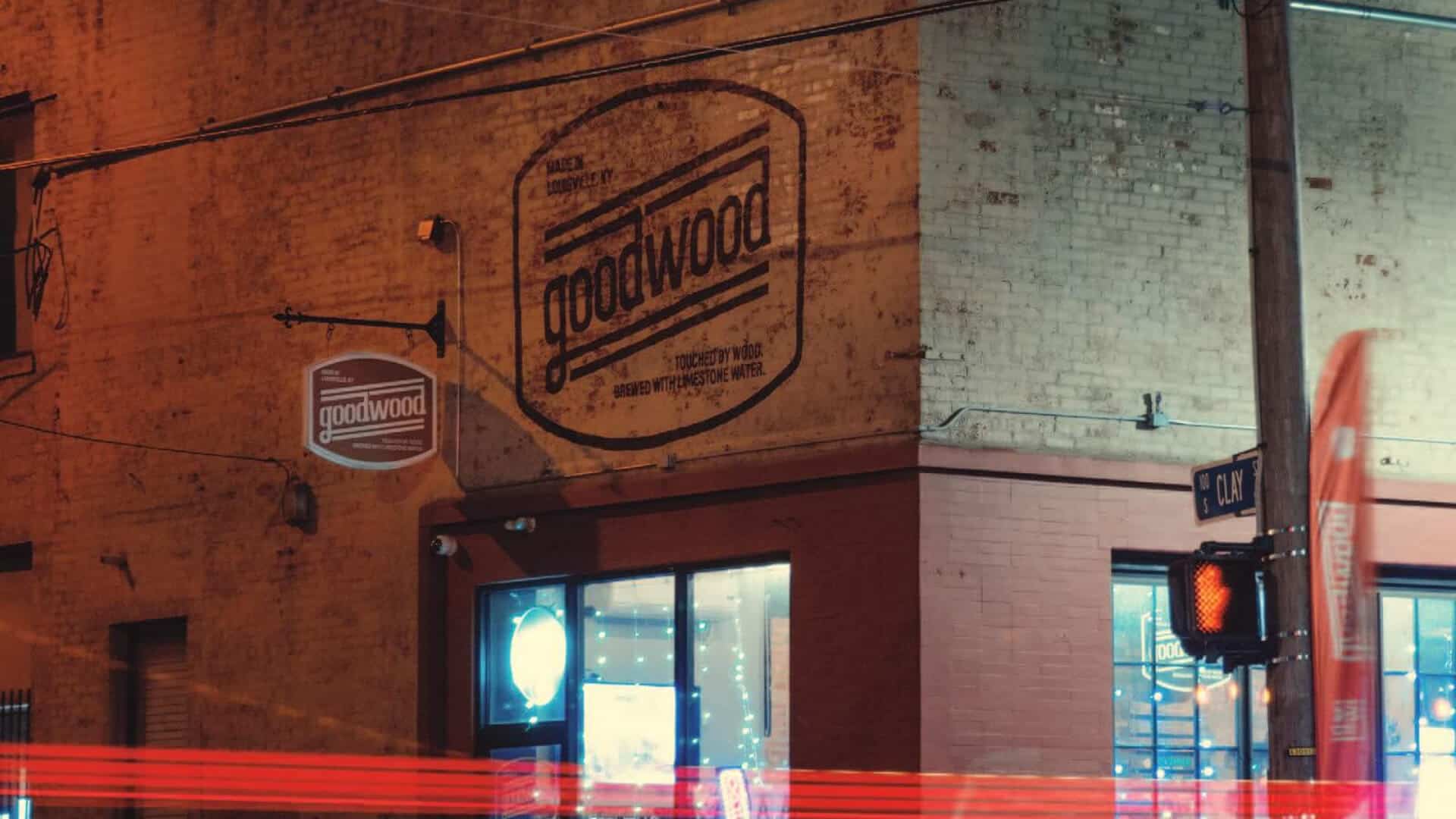
Let’s meet up at Goodwood

Daniel Dew
Legal Policy Director
“My husband and I met friends for our weekly dinner out tonight. The choice tonight was Goodwood Brewing Co. We started off with an order of Brisket Totchos, which were fabulous.”
![]() Leslie, Yelp review, Lexington
Leslie, Yelp review, Lexington
At Goodwood Brewing, the food is comforting, the beers come in flights, and the atmosphere immediately makes you feel like a regular.
“I’m in the hospitality industry,” says Ted Mitzlaff, CEO of Goodwood Brewing & Spirits. “There’s nothing I love more than providing food, safety, and fun for my patrons.”
The growing company has three locations in Kentucky and is adding a fourth. Their Louisville taproom hosts live music every weekend, including a Saturday afternoon “Bluegrass Jam,” where anyone is invited to bring an instrument, pull up a seat, and join in.
Wednesdays are board game and bingo nights. Kids are welcome in the taproom. Sometimes Goodwood even hosts yoga classes, where they serve “beermosas.”
“This place has personality and funk.”
Vyvian, Yelp review, Louisville
Goodwood started with beer. “We were kind of at the forefront of the craft beer movement,” Ted explains.
The company is known for its innovative barrel-aging techniques: Goodwood takes barrels that have held bourbon and recycles them for beer-aging, infusing its beer with heady bourbon notes. They’re located in “bourbon Mecca,” as Ted puts it, and have access to barrels from some of the best distilleries in the country, including Buffalo Trace, Four Roses, and Rabbit Hole.
Ted has entrepreneurial energy. He’s a chemical engineer and sees opportunities that others don’t. A few years ago in 2019, Goodwood reverse-engineered its beer-aging process to launch a bourbon that’s finished in beer barrels. They also produced about 10,000 barrels of beer for distribution in 16 states. The company tripled its revenues that year.
But that was before COVID-19.
“Being a whiskey guy, Scott, the bartender, suggested the Goodwood Bardstown. Amazing. Dropped a few ice cubes in the drink and the smooth honey flavor really jumped! Scott then spent 20 minutes telling me all about how the whiskey was made, the Bardstown legend… the German castle in the country (you’ll have to ask him!). The entire experience was solid gold… and Scott is my new standard by which all bartenders will forever be measured.”
Brian, Yelp review, Louisville
Goodwood Brewing’s taprooms are what sociologists and urban planners call “third places.”
Everyone needs somewhere to go besides home (the first place) and work (the second place). We naturally crave “joyful association in the public domain,” as sociologist Ray Oldenburg, who coined the term “third place,” puts it.
A third place could be a church, park, or theater. But for much of America, third places are restaurants and bars that make us feel welcome—a place where we can meet with friends, take our families, or chat with strangers. Think Monk’s Café in Seinfeld, Central Perk in Friends, or the bar in Cheers.
Even a McDonald’s can be an essential third place: The Guardian says that McDonald’s restaurants have become “de-facto community centers” in low- and middle-income neighborhoods across America. Newlyweds celebrate there, retirees meet there for morning coffee, and Bible groups gather there weekly. Unlike actual community centers, The Guardian notes wryly, a restaurant like McDonald’s is “free of bureaucracy.”
When COVID-19 spread rapidly across the globe in the spring of 2020, restaurants and bars around the country were forced to close. Americans hunkered down at home.
The lights in our favorite third places went out.
“I can’t wait to go back again.”
Don, Yelp review, Frankfort
When Goodwood was forced to close for onsite consumption in March 2020, Ted says, it was “a punch to the gut.”
Those were the numbing early days of the pandemic, when everything felt surreal and temporary. “It was billed as 14 days to flatten the curve,” Ted remembers. “So we thought, well, we can close for two weeks. And it won’t be that big a deal.”
But of course, the lockdowns didn’t end after two weeks. COVID cases and deaths multiplied. Reality set in: The world wasn’t going to snap back to normal anytime soon.
Goodwood Brewing had 80 people on staff in March 2020. They were forced to lay off almost everyone—reducing their staff to five.
Ted felt awful. “A lot of our employees in the service industry live check to check,” he says.
The company did what it could. Goodwood had about $80,000 in food inventory, so they gave most of it away to their employees. “They were able to go grocery shopping, basically, at Goodwood,” Ted says. Anything employees didn’t take, Goodwood gave to charity.
When some employees had trouble paying rent, Ted stepped in and negotiated with the employees’ landlords so they could stay in their apartments. And he was able to offer some folks hourly construction work: Because Goodwood’s doors were closed anyway, Ted figured he could tackle a few long-planned renovation projects—building a basement office at the Frankfort location, adding new bathrooms in Louisville—that would give staff an opportunity to make money.
A couple months slid by like this.
Then, in May 2020, Kentucky Governor Andy Beshear announced that restaurants could reopen again—with caveats.
And that’s when new, manmade difficulties began for Goodwood.
“The food was amazing, but the highlight of our stop was our waitress Ronda. She was an absolute sweetheart.”
Michael, Yelp review, Frankfort
When a state declares a state of emergency—as all 50 states did during the early days of the pandemic, some of which still have active emergencies declared to this day—the governor suddenly has access to a full suite of emergency powers.
That means a single executive gains sweeping authority that under normal circumstances would belong to the legislature. Instead of Kentucky’s 138-person General Assembly deliberating new COVID policies, Governor Andy Beshear simply announced the policies unilaterally.
Some of the governor’s policies were arbitrary or ineffective—and they seemed to shift without reason.
Initially, restaurants were capped at 33% capacity—meaning, two-thirds of the seats had to be empty. In July, Governor Beshear dropped the cap to 25%; then, a month later, he raised it to 50% but added a 10 p.m. cutoff for service.
Tables had to be six feet apart. “The six-foot rule was actually based on tuberculosis, over a hundred years ago,” Ted says. “So the six feet was arbitrary, nonsensical.” It eventually was trimmed to three feet.
Customers weren’t allowed to sit at the bar, but they could sit at tables near the bar. And then suddenly customers were allowed to sit at the bar—but only between plastic dividers with no more than two people in each section.
“It’s a magic wall,” Ted jokes about the plastic dividers.
Between the dividers and other protective equipment inside, and the tents and heaters Goodwood set up outside, the company spent about $100,000 bringing their spaces up to date with Governor Beshear’s shifting COVID policies.
“We did everything we could to comply with the regulations,” Ted says. “The last thing I want to be accused of is trying to get my employees sick or trying to get patrons sick.”
“I LOVE this place. The longer it’s open, the better the beer gets. This Christmas, the porter and milk stouts were absolutely brilliant!”
Melody, Yelp review, Frankfort
As a chemical engineer, Ted has some experience sanitizing spaces: In his pre-Goodwood life, he owned a chemical company that specialized in sanitizing food processing plants. COVID was a new ballgame, of course—but still, Ted says, “I know a lot about controlling microbes.” Whether or not the governor was handing down COVID restrictions, Ted would have followed through with his own plans to keep customers as healthy as possible. “We took extraordinary steps to make sure that everything was clean, sanitary, and safe,” he emphasizes.
But some of the governor’s rules didn’t make sense to Ted. How would a 10 p.m. curfew prevent the spread of COVID? And why did restaurants face restrictions that other industries didn’t? Goodwood’s Lexington taproom is next to a mall. Ted would sit in the taproom, which was open under a capacity cap, and watch shoppers enter the mall in droves. “You’d see literally thousands of cars in the parking lots, and we were restricted,” he says. “So it was very, very frustrating.”
Worse, the constant policy changes left him scrambling to keep up. “You couldn’t plan for the next week, the next month,” he says. “You didn’t know what the restrictions were going to be.”
The low point came in November 2020, when Kentucky restaurants were ordered to shut their doors once again.
“The service was friendly and fast, and the people working in there were happy to see my friend’s kid, and I thought that was real nice too.”
Brett, Yelp review, Louisville
For many restaurants and bars, Governor Beshear’s orders to close again were “a death knell,” Ted says. He was on group emails with other restaurant owners who lost all faith at that point and decided to close for good. A couple people he knew in the industry committed suicide.
Ted once again was left with an inventory of food at Goodwood, so he once again gave it away to employees and charity. He couldn’t give away beer, so he was forced to throw it away.
By the end of 2020, Goodwood had lost $2 million in revenue.
“The brewmaster took his time to explain the different styles they brew in premise. I’ll be back, no doubt!!”
Matt, Yelp review, Louisville
As the world approached the one-year mark of the pandemic in spring 2021, Governor Beshear was still invoking emergency powers to impose COVID restrictions on Kentucky. Restaurants were open again—but with strict and constantly changing limits on how they could serve customers.
By that point, Pacific Legal Foundation was working with Pegasus Institute in Kentucky to draft a bill that would limit the governor’s exercise of emergency powers to a 30-day window unless the Kentucky General Assembly voted to extend it. The time limit is crucial: Emergency powers make sense when there’s an acute threat and simply no time for legislative action. During the early days of the COVID-19 pandemic, that held true. But once a legislature has time to act, it’s no longer necessary to give a governor sweeping authority. Unilateral decision-making cannot be allowed to continue indefinitely.
The bill passed—but Governor Beshear pushed back, first vetoing the bill. After the legislature overrode his veto, Governor Beshear filed suit to prevent the restrictions from going into effect.
Ted had seen enough. He and a couple other Kentucky businesses filed a lawsuit against the governor. PLF represented them at no cost.
“You can’t have executive orders in perpetuity,” Ted says. “You’re not king.”
Ted had seen so many Kentucky restaurants close permanently during the pandemic. Many of those closings would have happened no matter what restrictions the governor handed down. COVID—which spreads among people who laugh with each other, share food, hug, and shake hands—is simply a natural enemy of the hospitality industry. It was inevitable that some restaurants and bars would become its victims. Just across the border in Indiana, where restaurants were allowed to open normally, 10% of restaurants failed during the pandemic. But in Kentucky, a stunning 30% of restaurants failed—three times the Indiana rate, and nearly double the national average.
“We went here for dinner on Father’s Day. Our server was super friendly and very helpful. She made our evening so nice. The food was really good and the live music topped off our perfect night.”
Cathy, Yelp review, Frankfort
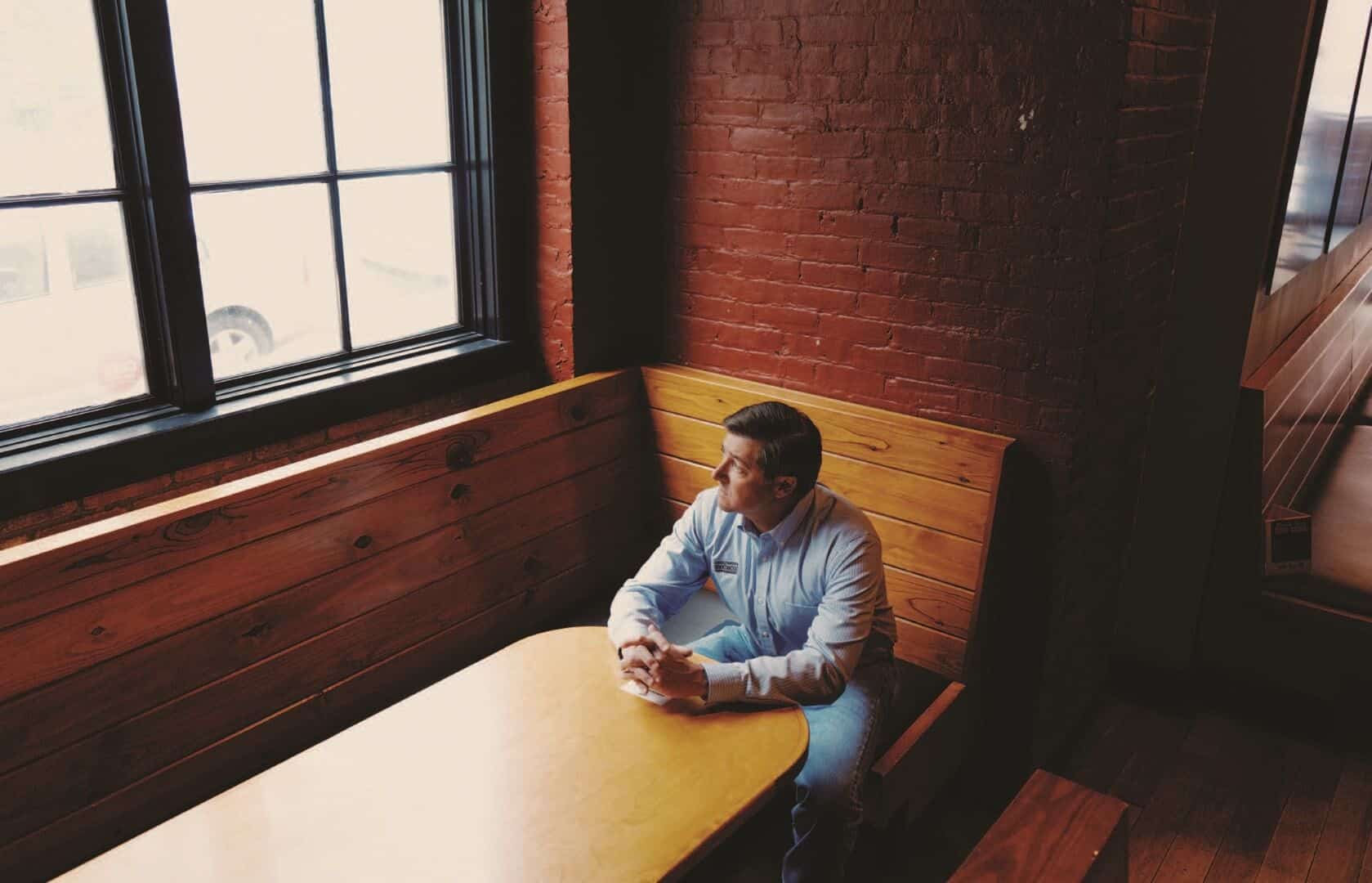

Ted Mitzlaff at Goodwood’s Louisville taproom.
Goodwood faced online blowback for its lawsuit against the governor.
“There’s some nasty things said, misinformed, uninformed, saying that I wanted to kill my patrons, that I didn’t care about people’s health,” Ted says. “It’s nonsense. I don’t like being called negative things on social media and having lies told about me,” Ted says.
But a strange thing happened: After Goodwood filed its suit, its popularity with customers actually increased.
“Our business at our restaurants doubled,” Ted says. “People were in support of what we were doing.”
Goodwood was even able to buy a brewery in Indianapolis that had gone out of business. They hired back the brewery’s old staff and opened the first Indiana Goodwood taproom. Across all its locations, the company now has double the employees it did before COVID.
“Maybe it’s luck, but every time I go in, there is an awesome band. Not to mention the beer and shareable pretzel app!”
Holli, Yelp review, Louisville
The lawsuit, Goodwood Brewing Company v. Beshear, went all the way to the Kentucky Supreme Court.
In June 2021, right around the date of the hearing, Governor Beshear reopened the state. The court decided that because the challenged orders were no longer in effect, the case was moot. However, the same day the court announced the decision, it also announced its decision in the governor’s suit against Kentucky lawmakers: a unanimous vote to uphold the emergency powers reform law.
It was a significant victory for Kentucky—a victory to which Ted’s lawsuit contributed.
Ted bears no ill will or bitterness toward the governor. “I want my state to be successful,” he says. “I have nothing against Governor Beshear personally.” If he had the opportunity, he’d offer the governor a beer. “Hopefully, we could find more in common than we have apart.”
For PLF, our work to limit governors’ emergency powers continues: We’ve worked with groups and legislators in 15 states to pass emergency powers reform bills—and we already have wins in 10 states.
Meanwhile, Goodwood’s doors are open. Bartenders are pouring; waitresses are serving; the kitchens are busy. There’s music, games, and laughter—the sounds of people enjoying each other’s company.
Goodwood means something to its community. If it had been forced out of business by the one-two punch of COVID and the governor’s ineffective restrictions, Ted and his employees would have lost their livelihoods—and the community would have lost a source of shared joy.
But Goodwood survived. Now, they’re more popular than ever.
“It’s a fun business to be in,” Ted says. “We make beer and bourbon. So at the end of the day, we might have difficult conversations and it might be a push and shove at times—and then we gather around the bar and we have a pint. And we look forward to the next day.” ♦
Watch PLF’s short documentary about Goodwood, featuring our interview with Ted:


The Hot Brown
This classic Kentucky sandwich dates to Prohibition-era Louisville, when the Brown Hotel’s chef sought to satisfy the early morning cravings of guests who’d been up all night dancing.
To make your Mornay sauce: Create a roux in a saucepan by melting butter over medium-low heat and slowly whisking in flour. Cook for a minute while stirring. Then whisk in heavy cream and milk and cook for an additional 2-3 minutes, until it begins to simmer. Remove the saucepan from heat and whisk in the Pecorino Romano cheese until the sauce is smooth. Add nutmeg, salt, and pepper to taste.
To assemble two open-face sandwiches: Preheat your broiler. In a toaster, toast four slices of Texas Toast. Cut two slices of the toast diagonally to create triangles, then set aside. Place the other two slices in a foil-lined baking sheet. Divide the sliced turkey evenly and place on the two sandwiches. Add two slices of tomato to each sandwich, then season with salt and pepper. Spoon half the Mornay sauce over each sandwich. Put the baking pan under the broiler and broil until the sauce is bubbling and brown in spots, about 4-5 minutes. Remove the sandwiches from the oven and place each on a plate. Add two triangles of toast next to your sandwich on each plate, and spoon sauce from baking dish onto the plates. Then top each sandwich with two slices of bacon and garnish with paprika, parsley, and a little extra Pecorino Romano cheese.
2 tbsp butter
2 tbsp flour
1 cup heavy cream
1 cup whole milk
¼ cup grated Pecorino Romano cheese (plus more for garnish)
10 oz sliced roasted turkey breast
4 slices of Texas Toast or Pullman’s White Bread
4 slices of cooked bacon
4 slices of tomato
Nutmeg
Salt and pepper
Paprika
Parsley


California fishermen may soon be extinct


Damien Schiff
Senior Attorney


Joseph Kast
Creative Manager
“Perhaps I should not have been a fisherman, he thought. But that was the thing that I was born for.”
Ernest Hemingway, The Old Man and the Sea
In the movie Aquaman, Patrick Wilson plays a villain who wages war on humanity over man’s alleged mistreatment of the sea. In real life, Wilson films promos for Oceana, a Hollywood-backed non-profit that advocates for strict regulations on commercial fishermen. “The oceans are talking to us, because they’re in trouble,” Wilson says in one viral ad. “But we can help them by winning victories over overfishing, pollution, and more.”
Ask your average environmental activist about their impression of commercial sea fishing and you’re likely to hear about turtles caught in plastic soda can rings or dolphins trapped in drift nets. Popular documentaries like The Cove and Oceans depict the world’s seas as a Manichean slaughtering ground where humans savage innocent sea life, with no regard for sustainability or conservation. (Both were produced by the politically oriented studio Participant Media, best known for the Al Gore film An Inconvenient Truth.)
Non-governmental organizations (NGOs) like Oceana have piggybacked off this cultural wave in recent years, leveraging Hollywood connections to gain media and political influence. But these groups—and the restrictive laws they’ve helped shape—are grounded in alarmism about commercial fishing that doesn’t match up with the facts.
“What we call the environmental movement is a religious movement,” says Michael Shellenberger, author of Apocalypse Never: Why Environmental Alarmism Hurts Us All.
In an interview for a Pacific Legal Foundation documentary, Shellenberger says many environmental NGOs “are trying to meet people’s existential or spiritual or psychological needs. They’re not actually trying to make the environment a better place. It’s just the ‘Marvel Comic Universe’ approach to environmental problems. It’s so exaggerated. It’s always so elitist. It always seems to involve telling poor and working people what they can and can’t do.”
When it comes to California fishermen, the list of what they can’t do is getting out of control.
In 2018, the California Assembly passed a bill that would phase out permits for drift gillnets, which are the only viable method for commercial swordfishing. The rationale is that drift gillnets capture too much “bycatch”—species other than the one you’re fishing for, such as turtles. This is effectively ending swordfishing in the state. (The federal government may soon follow California’s lead. In 2020, then-President Donald Trump vetoed a bill that phased out the use of drift gillnets in the West Coast fishery. That same bill—which does not take into account if there are economically viable alternatives for these fishermen—has now passed the Senate, and a companion bill in the House has passed out of committee.)
The nets are expensive. The state set up a fund to buy back the nets from fishermen at $10,000 each, with an additional $100,000 offered to buy back the permits required to use the nets. Still, that compensation comes nowhere close to the true lifetime value of the nets and permits.
Instead of drift gillnets, fishermen will be required to use something called a deep buoy set, which is supposed to reduce bycatch further. But with the deep buoy set, you’re effectively catching one swordfish at a time. That’s fine for a hobbyist—but not for a real fisherman.
The upshot is that American fishermen are being run out of business for not meeting impossible standards. And by making fishing increasingly unviable as a living in America, laws like the drift gillnet phaseout aren’t even protecting sea turtles or dolphins. They’re putting them at greater risk. The food industry will have to get its seafood from somewhere else—countries like the Philippines or Vietnam, whose waters are much less regulated and result in much more bycatch. The ocean waters of Mexico have far more sea turtles than the California coast, with nowhere near the sustainability and safety measures. In order to mitigate bycatch, California politicians have done everything in their power to ensure that there will be much more bycatch. The shame of it all is that there is no cleaner fishing industry than the California swordfish industry—and now that industry is disappearing.
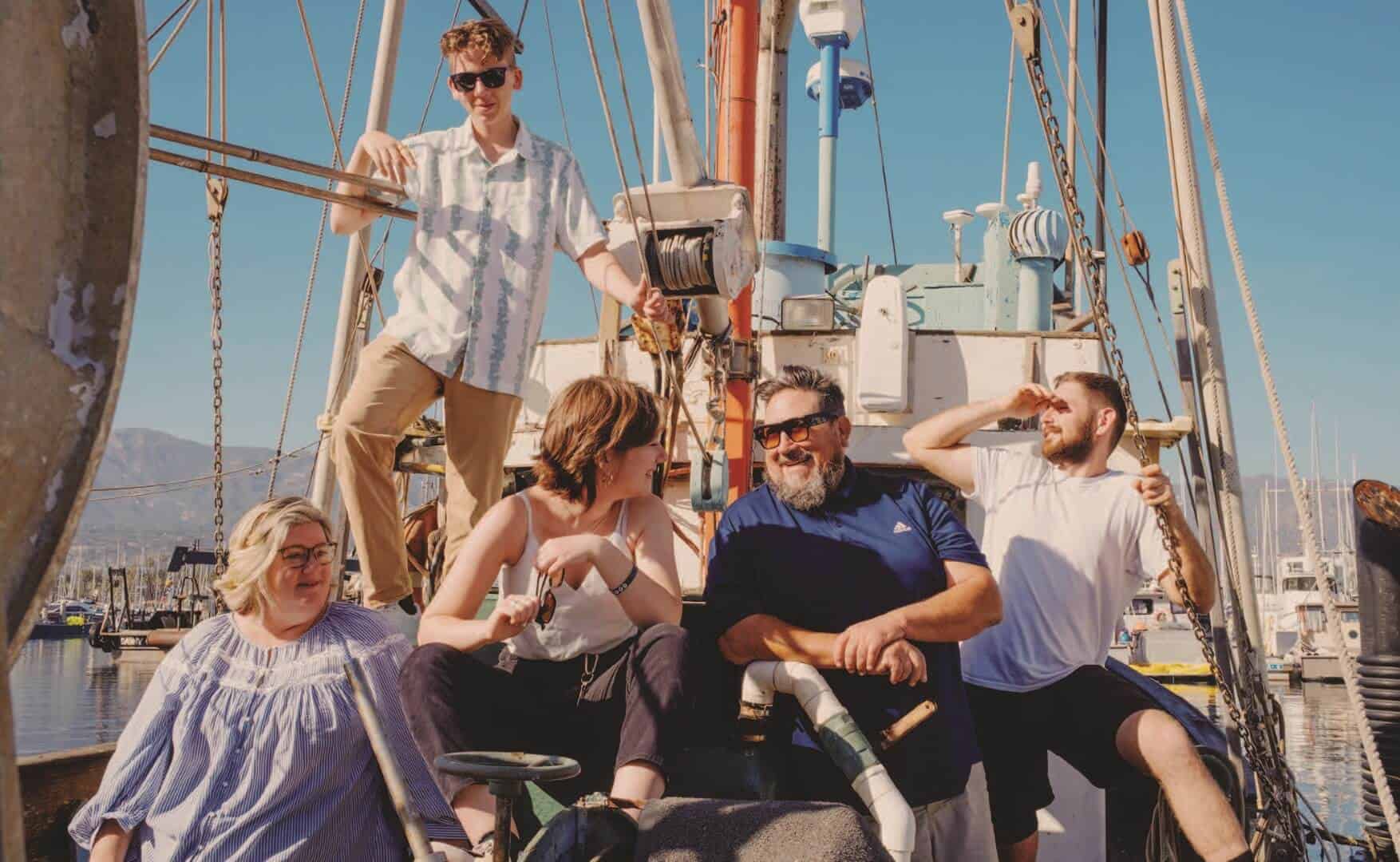

The Williams family, with Chris center and his eldest son Max on the right.
Attend enough Oceana fundraising events and you might get to meet Jon Hamm or Leonardo DiCaprio. But you’re not going to run into anyone who actually fishes for a living—the ones downstream of all the regulations and criticism were pushed out by this “Marvel Cinematic Universe”-style environmentalism.
If you did ever meet actual American commercial fisherman, like Chris Williams, you’d learn just how unfairly and inaccurately their industry is portrayed. Chris spoke to us a few years ago about what regulations have done to California fishing. He even took our camera crew out on his boat to show what being a fisherman is really like.
Drift gillnets have come under a lot of scrutiny from the activist class—but somehow, activists don’t apply that same scrutiny to learning how California fishermen use the nets. The truth is that bycatch is extremely rare.
“We don’t do that,” Chris told us, adding that he hasn’t caught a turtle in 17 years. In fact, there hasn’t been an observed death of a sea turtle due to drift gillnets since 1999. “We’re the most regulated fishermen in the world. Instead of actually mitigating problems, it’s ban, ban, ban.”
The public’s impressions of the American fishing industry would be very different if they spent time on these boats, shadowing actual fishermen and seeing how a fish makes its way to your plate. The boats are often small and cramped. Chris’ was 40 feet by 15. You’re out for weeks at a time, away from family. You’re completely at the mercy of the weather and the sea, many miles from the shore.
The labor itself can be brutal. We suspect that your typical environmental activist has never had what Chris calls “black nail.” Black nail is what happens to your fingers when you’ve been gripping ropes and hauling in nets for weeks on end, and you luck out and pull in 30,000 pounds of fish in a day and your fingernails just…fall off.
You’re also heavily scrutinized by the government. Every third trip, fishermen are required to have a federal observer living with them on the boat for up to 10 days at a time. That’s another mouth to feed and another body you have to keep safe. The observers track everything the fishermen do, to ensure they’re complying with the law. “They’re nice people,” Chris said. “But I don’t want them living in my boat with me 24/7.” Who would?
There’s also the GPS tracking device.
“I am required to have a GPS device which tracks my every move of my boat. And it goes directly to an office in Washington State where federal agents watch it. They could give me a fine six months later and never notify me.”
But these fishermen don’t need anyone’s sympathy. They love what they do. Commercial fishing is one of the few industries left where you can make a good living without a college degree. “My family didn’t have the means to send me to college,” Chris told us. “I found commercial fishing. It’s provided my family with a way to make a living, and people need that. Not everyone has a college path.”
But the squeeze from the torrents of ever-changing, ever-expanding regulations has resulted in a dying industry. “In my whole career, there’s been a 90% reduction in the number of fishermen in the state of California,” Chris said. “In my fishery, when I first started, there were probably 40 guys who do what I do, and now there’s five.”
At the beginning, Chris’ fishing operation was a family effort. He’d spend weeks out at sea, then haul fish back into port in Oxnard, just north of Los Angeles. Then it was straight to the farmers market, where his wife, Dania, and his children—two sons and a daughter—helped gut and sell the fish directly to their community.
“When you go out, put yourself against the elements and feed 10,000 or 20,000 meals—that’s a great feeling…. That’s always a great feeling.”
The Williamses started their business, Fresh Fish Fanatics, at the right time in the culinary zeitgeist. The farm-to-table social movement caught on in the early 2000s and has only become more popular over time. Californians in particular are fans. It’s popular for a number of reasons. Locally sourced food is often more environmentally friendly, because it doesn’t have to travel as far. The local emphasis also tends to help smaller family-owned outfits, rather than some distant corporate outlet.
If you shop at local farmers markets, you’re actually meeting the people who grow or catch the food you’re going to prepare and share with your family. And that improves the perspective of not just customers but also sellers. The Williamses like knowing the people they’re feeding. “I’ve discovered that people just crave local food. There’s just no better way to get fish than day-fresh fish like I supply it,” Chris told us.
Today, California fishermen are at a crossroads. Do they continue to pursue the difficult, rewarding work they love and keep providing fresh fare for the state’s farm-to-table enthusiasts? Or do they decide that California—and its activist celebrities attending Oceana galas—have made the businesses commercially unviable?
PLF is currently representing several swordfishermen in a lawsuit challenging the drift gillnet ban. The California Department of Fish and Wildlife tried to have the case dismissed in February, but the motion was denied. For now, the fight continues.
As for Chris Williams: After decades as a swordfisherman, Chris eventually decided he’d had enough. He allowed California to buy back his drift gillnet. For now, he still fishes for other fish species. But when he retires, he plans to sell his boat—to his 26-year-old son, Max, who is still optimistic about the future of California fishing.
Max is a third-generation fisherman. He grew up with fishing as the family business. His father cultivated a love of fishing in his kids. When we asked Chris several years ago how he’d feel if one of his kids became a fisherman, he said, “If they want to go fishing, I’d love it. And I think it’s an awesome way to live. I’m totally supportive of that.”
But the California Department of Fish and Wildlife is far less supportive.
Max wants to catch halibut, not swordfish. For halibut, fishermen use a regular gillnet, not a drift gillnet. Fortunately, there’s no ban on gillnets—but, unfortunately, you need a permit to fish with one in California. And here’s the rub: California has had a moratorium on issuing new gillnet permits since 1985—a decade before Max was born.
Under state law, permit holders can transfer their gillnet permits to another fisherman, if the transferee is “otherwise qualified” for a permit. This system worked fine for years, but the California Department of Fish and Wildlife is re-interpreting its own rules. The department is now insisting that all permit transferees must have a level of experience that a fisherman can obtain only if he once had a permit or illegally fished without one.
Max has followed all the rules. He worked on gillnet vessels for years and saved nearly every penny he made. He bought his own boat, restored it, and plans to take over his father’s boat as vessel captain when Chris retires. Max dutifully followed regulations by arranging for a gillnet permit transfer request from an experienced fisherman in the community, who was happy to transfer his permit to Max.
But the transfer request was rejected. All of Max’s savings and plans—the fishing life he knows, the career he was building for himself—are now in jeopardy.
Max, like his father, doesn’t like seeing people in his industry pushed around. PLF is now representing him in a lawsuit against the California Department of Fish and Wildlife, arguing that the department is misinterpreting its legal authority. There’s no reasonable justification for denying Max the permit he needs to fish for halibut.
California regulators seem intent on discouraging young fishermen like Max who still believe fishing can provide economic opportunity and a good life. If things don’t change soon in the state, there will be no next generation of California fishermen—it will be a way of life that dies out when Chris’ generation retires.
That seems to be what California NGOs and Hollywood activists want. To be sure, there are environmental NGOs that do good conservation work. Organizations like the Environmental Defense Fund (EDF) and the Property and Environment Research Center (PERC) work directly with ranchers, farmers, and fishermen. But other groups, like Oceana, are tragically misguided. They push for sweeping bans and adopt an antagonistic attitude toward fishermen—the working families who practically live on the water.
If things don’t change soon in the state, there will be no next generation of California fishermen—it will be a way of life that dies out when Chris’ generation retires.
In his Oceana commercial, Aquaman star Patrick Wilson tells viewers that “everyone can be an ocean hero.” But few people actually have what it takes to be heroic out on the ocean. We all have our callings in life—and for some, fishing is a calling.
The ocean heroes are tough souls like the Williamses, who’ve braved the open seas, and the black nail, and the fickle weather, and the days where the catch is light. Most of all, they brave the unreasonable, constantly changing rules imposed on them by activists and politicians who are better at making themselves feel good than actually doing good.
“We need our oceans. Oceans could help feed more than a billion people,” Wilson says at the end of his Oceana promo spot. On this point, he couldn’t be more correct. Our oceans are a tremendous food source and can be fished sustainably to feed the world. People like Chris and Max can do this. It’s just not clear whether the government is going to let them.♦


Butter-Poached Halibut
Wild halibut can grow up to nine feet long and are generally preferable to farm-raised halibut, due to the latter’s diet. When buying halibut at a grocery or fish market, make sure the flesh is white and glossy—that’s how you know it’s fresh.
To cook: In a saucepan over medium heat, melt 2 tablespoons of butter in a saucepan. Add shallots and sauté until translucent. Next add the juice from half a lemon and all your remaining butter. When all the butter is melted, place the halibut gently in the middle of the pan. The cooking liquid should submerge about 2/3 of the fish. Turn the temperature to high and cook until the butter begins to boil, about three minutes. Turn to low and cook for an additional minute. Remove from heat and finish with chopped chives or parsley, a slice of lemon, and flaky salt to taste.
12 oz halibut
1.5 sticks (12 tablespoons) unsalted butter
Half a lemon (slice the other half to use for garnish)
1 tbsp diced shallots
Chopped chives or parsley
Flaky salt
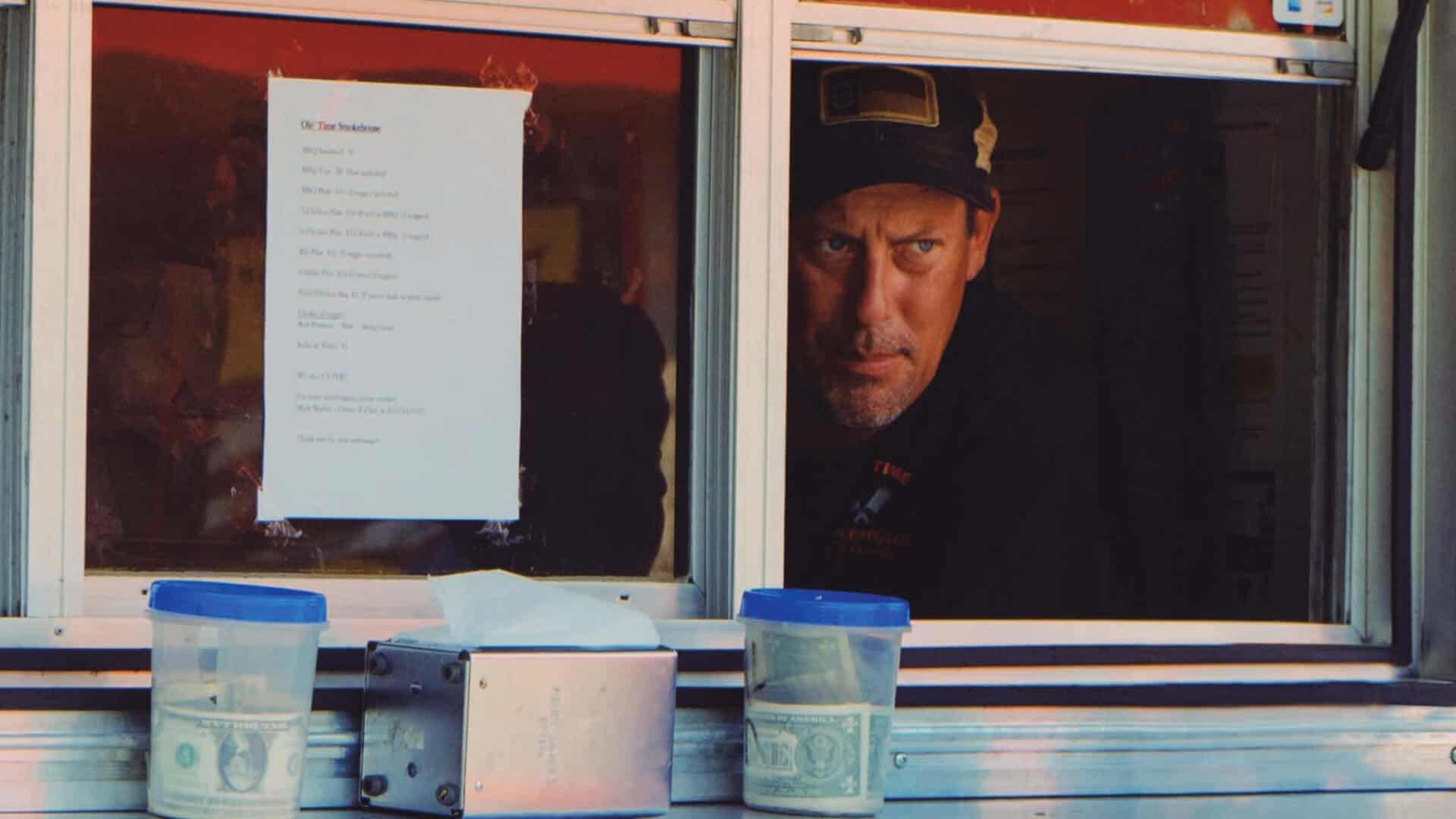

Lunch at Ole Time Smokehouse


Jessica Thompson
Attorney
On days when Mark Shirley serves lunch at his food truck, Ole Time Smokehouse, he wakes up at 3:30 a.m. By the time most people in Farmville, North Carolina, are just getting out of bed, Mark’s barbeque has already been cooking for hours.
Good Carolina barbeque takes time.
“I cook the ole-timey way,” Mark says. He chops the skin up in his whole-hog barbeque. “Most modern places don’t do that.” He also makes barbeque chicken, baby back ribs, hot dogs, smokehouse dogs (fresh sausages smothered in sauce), and traditional sides like coleslaw, red potatoes, and string beans.
After cooking for eight hours, Mark drives Ole Time Smokehouse from Walstonburg—the 200-person town where he lives—a few miles down the road to one of his preferred lunchtime parking spots. He posts the day’s location on Facebook. When he starts serving, his customers are ready.
“I hear people talking to themselves, saying, ‘I’ve been waiting for this all week,’” Mark says.
Until last year, Mark’s best spot to serve lunch was right in downtown Farmville, the 5,000-person town just east of his home. He leased a parking spot for Ole Time Smokehouse near a downtown thoroughfare and served lunch to the weekday working crowd.
Ole Time Smokehouse was popular in Farmville—until the town kicked Mark out.
Life in a small town
Farmville is the kind of place where you can’t go shopping “without seeing half a dozen people you have to stop and talk to in the grocery aisle,” Mark says.
There are good and bad parts to life in a small town like Farmville.
Here’s the good part: When Mark first opened Ole Time Smokehouse, word spread quickly through Farmville that his barbeque trays were a must-try. People told their friends and coworkers. Within six months of opening the food truck, Mark had a regular lunchtime crowd and was catering church events, weddings, and family reunions in the evenings and weekends.
“I’ve cooked all my life for friends and family,” Mark says, “and it’s a passion of mine that I’ve always enjoyed.”
That support meant everything to Mark. Ole Time Smokehouse was the fulfillment of a high-risk dream: He’d left a stable salary as general manager of a car dealership just outside Farmville to try to make a living with his food.
“I’ve cooked all my life for friends and family,” Mark says, “and it’s a passion of mine that I’ve always enjoyed.”
He invested his savings into Ole Time Smokehouse and started serving his barbeque, “not knowing if I would go bankrupt and lose every dime I’d ever saved my whole life pursuing this,” he remembers.
The town of Farmville made his food truck a success. Six months after he opened, Mark told a North Carolina newspaper that he was humbled at the response. “It has been successful beyond my wildest dreams,” he said.
But here’s the bad part to life in a small town: Everyone is connected—and if you’re not an insider, you can quickly find yourself an outcast.
Changing the rules
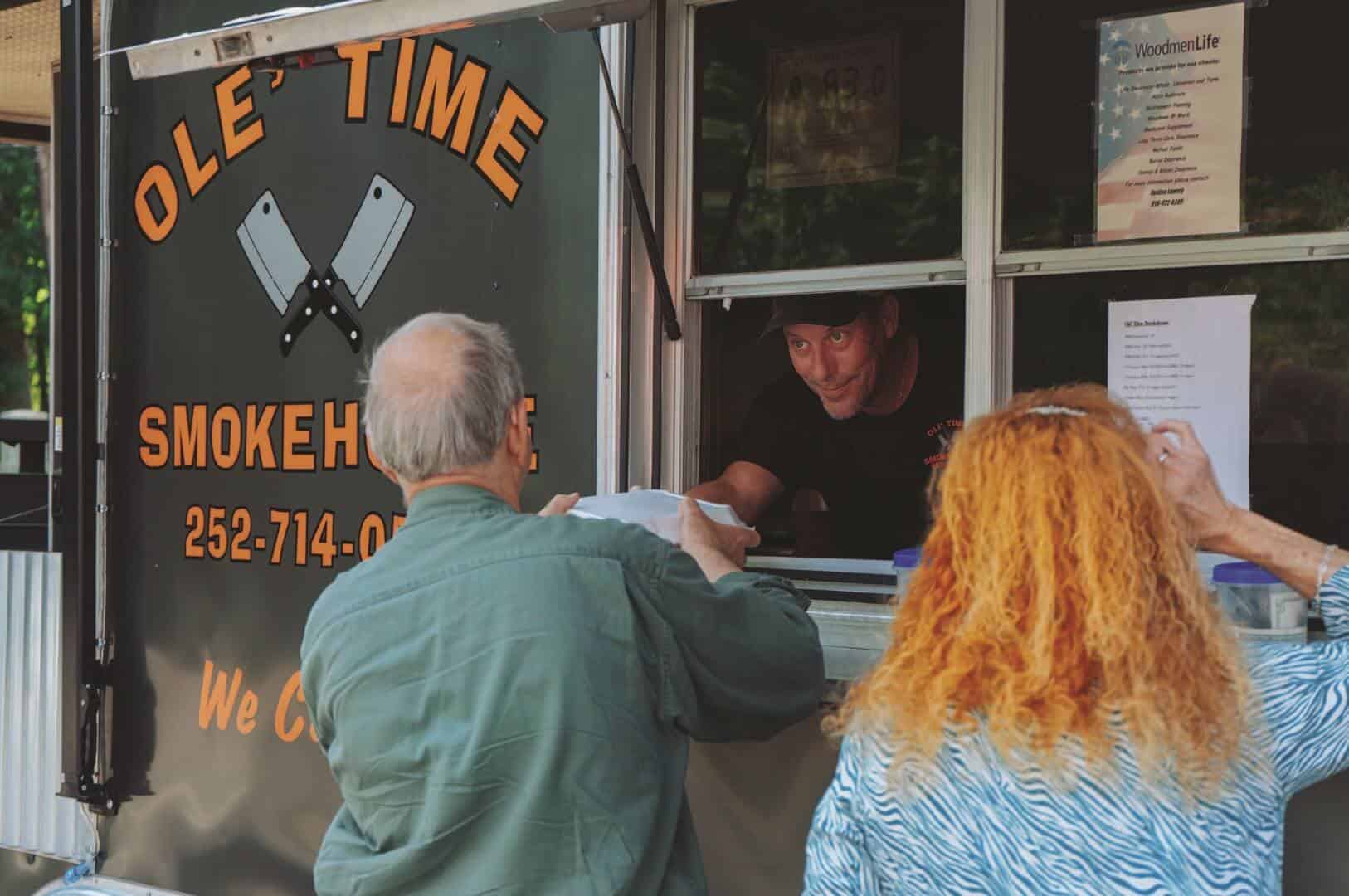

Mark Shirley serving customers at Ole Time Smokehouse.
On April 5, 2021, Farmville’s Board of Commissioners voted unanimously to change the town’s food truck ordinance.
Previously, a food truck operator was required only to pay a $100 annual fee and park no closer than 100 feet from a brick-and-mortar restaurant’s front door. But the new rules increased the fee to $75 per day of operation, with a maximum of two days per week allowed.
What had cost Mark $100 annually would now cost $7,800—an increase of 7,700%.
The new rules also forced food trucks to park more than 100 feet from a brick-and-mortar restaurant’s property line—not just 100 feet from their front door. The privately owned parking spot that Mark had been leasing in Farmville was close enough to a restaurant’s property line that it now violated the ordinance.
Mark says Farmville’s sudden regulatory shift put him in an “extremely frustrating and emotional” position.
“I had left a steady income, invested all of my savings and everything into this business, and had now been operating for a year and a half and built up this huge base of customers,” he says. “And now all of a sudden, what I could think of in the back of my mind was, ‘I’m going to have to start over from scratch.’” He was devastated. The ordinance change felt almost personal: It wasn’t like Farmville’s streets were crowded with food trucks. He was one of the few food trucks in town.
It felt like the town was targeting Ole Time Smokehouse.
Restaurants vs. food trucks
Rumor has it that a brick-and-mortar restaurant complained to Farmville town officials about Mark’s success.
It wouldn’t be the first time a restaurant owner complained about a food truck. Across the country, the traditional restaurant industry has been mounting a cold war against its footloose younger cousin, the food truck industry.
Food trucks are not a new phenomenon. “Lunch wagons” date back to the late 19th century, when vendors cut windows out of covered wagons and parked outside newspaper offices to sell sandwiches and pies to pressmen working at all hours. During the World War I era, pop-up barbeque stands were erected to feed workers in North Carolina cities like Charlotte and Salisbury.
But the contemporary food truck craze really started around 2008: The economic recession made low-capital food trucks an attractive option for talented chefs, while social media made it easy to share real-time locations and daily menus with customers. Food trucks suddenly became roving hot spots, generating customer buzz and fawning reviews that were once reserved for brick-and-mortar establishments.
To restaurant owners—some of whom are stuck with high rents and capital costs—the popularity of food trucks can be a sore spot. No one’s thrilled to discover that a nearby competitor is satisfying customers while paying a fraction of your costs. “There’s just not enough to go around right now,” a Brooklyn restaurateur complained to The New York Times in a 2011 article that asked, “Should Cities Drive Food Trucks Off the Streets?” Even restaurants that compete against each other seem to find common ground in opposing food trucks: In Detroit, two “Coney Island” hot dog restaurants that have been neighbors for more than 100 years both raised concerns about food trucks parking on their street to sell hot dogs.
Across the country, the traditional restaurant industry has been mounting a cold war against its footloose younger cousin, the food truck industry.
A common complaint about food trucks is that they don’t pay property taxes and aren’t rooted in their communities. There’s some truth there; however, food trucks do contribute to tax revenues by charging sales tax. And there’s evidence that food trucks help traditional businesses by bringing increased foot traffic to the neighborhoods they park in. Food trucks can even help activate or revitalize public spaces, playing a crucial and highly visible role in their communities. They’ve also inspired trends among brick-and-mortar businesses, like lunchtime to-go windows and mobile pop-ups.
Food trucks face their own disadvantages: They can’t provide customers with heat in winter or air conditioning in summer, or the comfort of tables and booths.
But some well-connected brick-and-mortar restaurants are convinced the playing field is uneven—and they’ve pulled political strings to make life more difficult for food truck operators like Mark.
‘Not in the clique’
Even though Mark has lived in the Farmville area his whole life, he doesn’t have the same influence with the town that brick-and-mortar restaurants do. Two of Farmville’s five commissioners are in the commercial real estate business with previous investments in downtown Farmville, including brick-and-mortar restaurants. Those two commissioners recused themselves from the vote on the food truck ordinance after a local attorney pointed out their conflict of interest.
By then, however, it was already clear what the board’s preferred outcome was. The rule change passed among the remaining commissioners 3-0.
“It’s very political, little towns,” Mark says, “and if you’re not in the clique, you’re not going to be successful. And that’s just not the way the United States should run.”
Now, instead of parking in downtown Farmville, Mark can only serve lunch to his Farmville customers from a parking lot two miles away across the town’s border. Some customers are so loyal that they drive out to meet Ole Time Smokehouse.
But the food truck is losing business by not being downtown.
Supporting food entrepreneurs
Mark is a problem-solver by nature. Anyone who specializes in barbeque has spent endless hours perfecting the right combination of smoke, spices, heat, and time. Pitmasters are not prone to giving up.
“My restaurant is on wheels,” he points out. “It would’ve been so easy for me to just say, ‘Well, to hell with it, I’ll just go to the next town and I’ll start over.’ But I’m not that type of guy.”
Pacific Legal Foundation is representing Mark in a lawsuit against the Town of Farmville. We argue the town is violating the North Carolina Constitution’s “fruits of their own labor” clause, which guarantees the right to earn a living.
Throughout our history, when we’re at our best, this country has given entrepreneurs the space they need to experiment, take risks, and compete in any industry of their choosing.
“[T]he Town of Farmville should not pick economic winners and losers,” we write in our complaint. Customers, we believe, should be able to decide for themselves where they want to eat lunch.
Mark Shirley’s case is, at its core, about a fundamental feature of American society: Throughout our history, when we’re at our best, this country has given entrepreneurs the space they need to experiment, take risks, and compete in any industry of their choosing. We don’t close doors to protect entrenched interests. We keep pathways open for men and women who are willing to bet on themselves and pursue the American dream.
That’s what Mark did. He could have stayed in his car dealership job indefinitely—but instead he became his own boss, taking a chance on the belief that people would love his barbeque.
And he was right.
For millions of entrepreneurs like Mark, cooking is a means of economic opportunity and empowerment—from immigrants who open street stands to stay-at-home mothers who sell baked goods. Food trucks, in particular, have been a boon for independent-minded entrepreneurs looking to leave unfulfilling jobs and take control of their lives through food. Probably the most famous food truck entrepreneur is Los Angeles chef Ron Choi, the first food truck operator to be named a “Best New Chef” by Food & Wine magazine. Choi, the son of Korean immigrant entrepreneurs, learned how to cook after dropping out of law school; then, after years toiling as a hotel chef, he launched his Korean-Mexican food truck and became a culinary star. (Choi’s story inspired the 2014 Jon Favreau movie Chef.)
It’s this vibrant culture of entrepreneurship and economic liberty that the town of Farmville is stifling with its food truck ordinance.
And that’s why Mark is fighting back.
“If I had just left quietly, nothing would change in the town,” he says. “The next guy that came along that was just like me will get treated the same way.”
The tradition of barbeque
The irony of Mark Shirley being pushed out of Farmville over a barbeque food truck is that barbeque is precisely the kind of food that’s meant to bring people closer together.
Neighborhoods host backyard barbeques on weekends. Towns host public barbeques every July 4. Barbeques are social, casual, and outdoors—everything that Ole Time Smokehouse is.
On its town website, Farmville calls itself “the friendliest little town in the state” and claims that “[e]mbracing progress while holding on to small town values makes Farmville a great place to live, work and grow.”
That’s the experience Mark had in Farmville—until the Board of Commissioners exiled him to the outskirts of town.
If we win our case and Mark’s able to bring Ole Time Smokehouse back to downtown Farmville, he’ll be bringing the best traditions of American barbeque with him—not just the tradition of mouth-wateringly delicious food, but also the tradition of being inviting and welcoming to all. ♦


Carolina-style slaw
In most of the United States, coleslaw is heavily dressed with mayonnaise and buttermilk. But in the Carolinas, slaw is a different thing entirely: It’s bright, crisp, and vinegary, and can serve as the perfect side or condiment for sandwiches, fish tacos, or—of course—barbeque.
To make your dressing: In a saucepan over medium heat, combine the vinegar, oil, sugar, salt, dry mustard, celery seed, and black pepper. Bring to a boil and then stir until the sugar is dissolved. Remove from heat.
To make your slaw: In a bowl, combine the cabbage, red pepper, onion, and carrots. Once the dressing has cooled slightly, pour the dressing into the bowl and toss the vegetables. Cover and refrigerate the slaw for at least an hour before serving.
About 8 cups of shredded cabbage (or 1 head)
1 red pepper, chopped
1 sweet onion, chopped
2 medium carrots, grated
1 cup sugar (can use less if you prefer a more sour slaw)
1 tsp kosher salt
⅔ cup vegetable or canola oil
1 tsp dry mustard
1 tsp celery seed
1 cup apple cider or white vinegar
¼ tsp black pepper
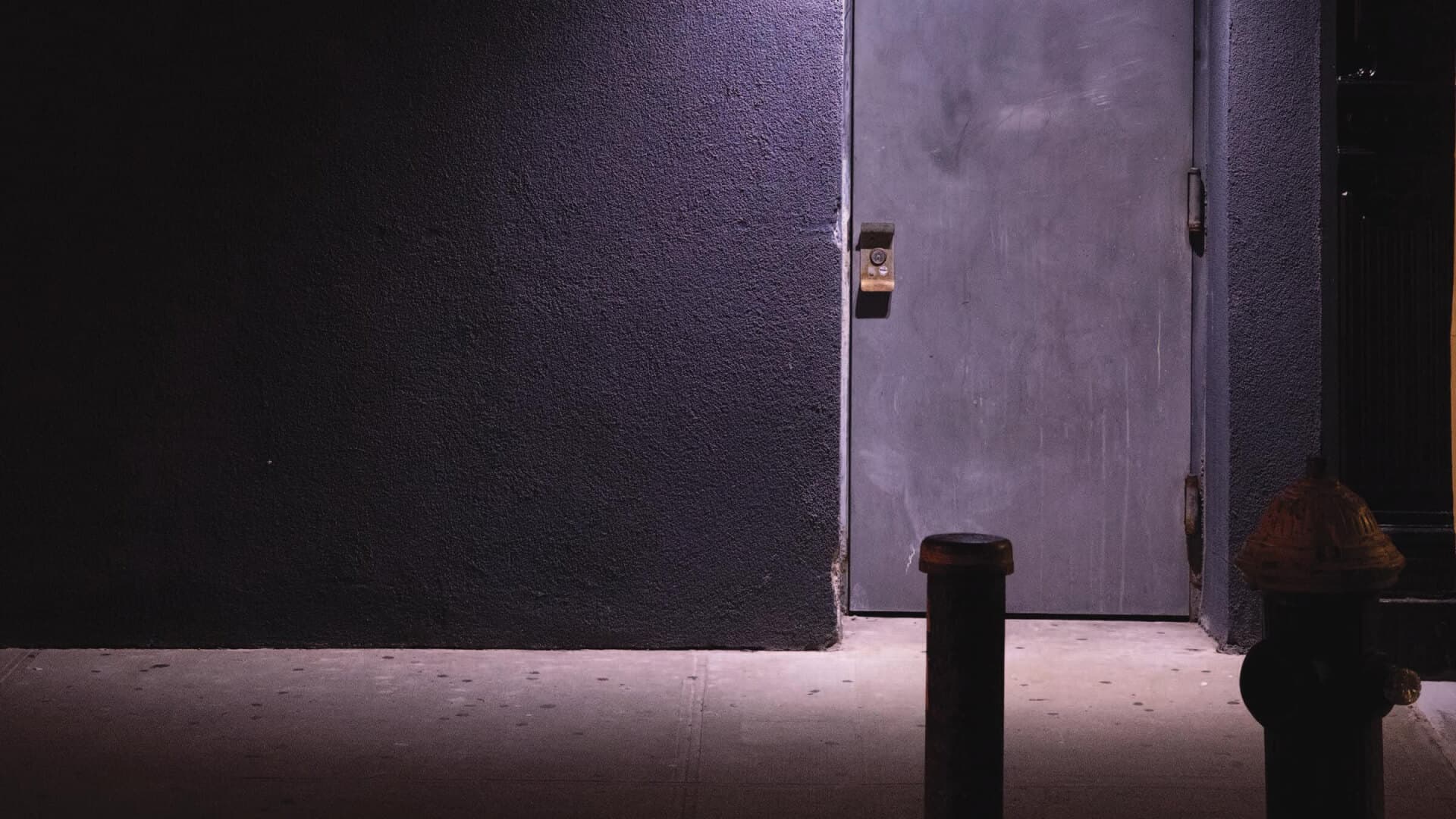

Prohibition for thee,
not for me


Elizabeth Slattery
Senior Legal Fellow
“I have a searing memory of a day in my childhood.”
William Leuchtenburg was a boy living with his family in New Jersey during Prohibition. His father, a postal worker, commuted into Manhattan to work at a post office near Penn Station. But Mr. Leuchtenburg’s salary was modest, so he supplemented the family income by running a small still in the basement of the family home and selling his liquor locally.
Eight-year-old William was sitting on the front steps of his home one day when two strange men in suits arrived to speak with his father.
“They know he has a still in the cellar. And he has to smash it,” William, now a historian, recounts in Ken Burns’ documentary miniseries Prohibition. “And that takes away the extra family income. We are forced to move into the borough of Queens in New York—to give up the house, the countryside. And the city, and life, close in around me.”
For middle- and working-class Americans, this was what 1920s Prohibition meant: It meant the loss of choice and opportunity—the forced shuttering of economic freedom. Thousands of people lost their livelihoods: not just distillers and saloon workers, but also truckers and barrel-makers.
And yet, on those same nights that young William Leuchtenburg was huddled up in Queens, feeling life close in around him, Manhattan’s glitterati were drinking and dancing in speakeasies until morning. An estimated 30,000 speakeasies operated in New York City by the mid-1920s, fueled by liquor that had been bootlegged, smuggled, and hoarded.
“You pass the portals of a guarded house, leave the throngs in the Avenue, and straightway you are transported to another clime,” travel writer Stephen Graham wrote in New York Nights, his 1927 guide to New York speakeasies. “Inside is all unreality, sentiment, indulgence and relaxation.”
For anyone with money and social connections, this was what Prohibition meant: raucous nights in pop-up clubs tricked out in lush, theatrical decorations—silver Venus de Milos, painted lanterns, cigarette girls in Russian costumes—where well-heeled clientele paid a “couvert charge” to drink and socialize with other privileged, in-the-know sophisticates.
But what about the working class? The saloonkeepers who lost their livelihoods in 1920 when the Eighteenth Amendment went into effect? The farmers who could no longer distill surplus crops?
They bore the cost of Prohibition—while the elite danced.
What working America lost
Before Prohibition, distillers, brewers, and barmen held a place of distinction in American society.
George Washington became a successful distiller after leaving the White House. The early Supreme Court often met in a tavern. Abraham Lincoln sold whiskey at a Kentucky tavern before becoming a lawyer. (When Stephen Douglas pointed out that fact during their 1858 debates, Lincoln replied, “It is true that the first time I saw Judge Douglas I was selling whiskey by the drink. I was on the inside of the bar and the Judge was on the outside. I was busy selling, he was busy buying.”)
Whiskey was a financial lifeline for farming communities. Farmers didn’t have to waste corn, rye, and wheat that would soon rot—instead, they could distill it into whiskey, which was easier to transport than raw crops. In rural communities without reliable banking, whiskey could even be used as a form of currency.
And the saloon was a form of community center: According to a union worker in 1900, saloons were “looked upon by the vast majority of workingmen as their club.” In Irish, Scandinavian, and Italian immigrant neighborhoods, saloonkeepers provided job opportunities and advice to their fellow immigrants. In factory towns, a saloon would sometimes become a “poor man’s bank” where workers could cash their paychecks with the saloonkeeper. In other words, saloons were the ideal “third place” for working Americans: a regular spot they could visit between work and home, where they’d find comfort, connections, and a much-needed sense of belonging.
“Saloonkeepers are notoriously good fellows,” Jack London wrote in 1913. While traveling, London made a practice of visiting a saloon in a new town, buying the saloonkeeper a drink, then asking for travel advice. “I was no longer a stranger in any town the moment I had entered a saloon,” London wrote.


The Eighteenth Amendment
Everything changed on January 16, 1919, with the ratification of the Eighteenth Amendment.
The amendment declared that one year after ratification, “the manufacture, sale, or transportation of intoxicating liquors” would be prohibited in the United States.
Among the loudest cheerleaders for Prohibition were eugenicists, who believed Prohibition was key to engineering more perfect human beings.
“Virtually every part of the Constitution is about expanding human freedom,” writer Pete Hamill muses, “except Prohibition, in which human freedom was being limited.”
Congress also passed the Volstead Act, which implemented the fine details of the alcohol ban. As of January 17, 1920, Prohibition was enforceable law—which meant workingmen lost their saloons, and honest businessmen suddenly became criminals.
“I’ll give you bartenders forty-eight hours to quit your jobs and get away from the saloon business,” a Prohibition agent threatened in The New York Times.
Prohibitionists had a paternalistic attitude about the law’s effect on the working class: They believed the alcohol ban was a benevolent law that would save men from themselves, forcing them into more productive vocations and habits. Among the loudest cheerleaders for Prohibition were eugenicists, who believed Prohibition was key to engineering more perfect human beings.
Some temperance advocates were convinced that Prohibition would be the dawn of utopia in America. The day after the Eighteenth Amendment went into effect, evangelical preacher Billy Sunday threw a mock funeral for “John Barleycorn” (a personification of alcohol) and declared: “The slums will soon be only a memory. We will turn our prisons into factories and our jails into storehouses and corncribs.”
But Prohibition didn’t end poverty or crime; it simply pushed some distillers into the black market, where they either got caught by Prohibition agents or found success as criminals. Others gave up. Restaurants that played by the rules struggled to make a profit without liquor sales. Many failed, leaving servers and cooks scrambling for new jobs. By the mid-1920s, anti-Prohibition congressmen estimated that Prohibition had destroyed 100,000 jobs and cost a billion dollars in closed businesses.
An industry that had been a source of economic opportunity for over a century was suddenly in exile—and organized crime had taken over alcohol production, bringing new violence to America’s streets.
Speakeasies replace saloons
While working Americans were losing jobs and struggling with rising crime, the wealthy were finding loopholes in the law—or flat-out ignoring it.
“I don’t know how you fellows feel about Prohibition,” one gin-drinking character says in Sinclair Lewis’ 1922 novel Babbitt, “but the way it strikes me is that it’s a mighty beneficial thing for the poor zob that hasn’t got any will-power, but for fellows like us, it’s an infringement of personal liberty.” Another character says that Prohibition is fine—“for the working-classes.”
Babbitt was satire, but Lewis was capturing a real feeling among the upper classes: that Prohibition was for other people.
Americans with money, power, or social influence could keep right on drinking. It was technically legal to consume any alcohol that you had purchased before Prohibition went into effect—and because the Eighteenth Amendment went into effect a full year after it was ratified, savvy Americans with means had a full year to stock up on supplies. The Yale Club in Manhattan was rumored to have stocked up so much liquor in that year that they were able to serve their club members for the entire 13 years of Prohibition.
Babbitt was satire, but Lewis was capturing a real feeling among the upper classes: that Prohibition was for other people.
Any well-connected American who didn’t stock up on liquor could finagle a doctor’s prescription for whiskey: Prohibition laws had a loophole for “medicinal” alcohol, and some distilleries successfully lobbied Congress to be licensed for medicinal purposes. Doctors earned an estimated $40 million writing whiskey prescriptions during the 1920s.
The wealthy took advantage of all loopholes in the law—but they barely needed to. They were never the real targets of Prohibition. Enforcement was unequal by design: The saloons that catered to factory workers were forced to close, and middle-class families were punished for home-brewing; but law enforcement was less interested in interrupting the parties of fashionable society.
“The speakeasy has replaced the saloon,” John D. Rockefeller wrote in 1932. Barrooms that served the working public had shuttered, but decadent speakeasies and clubs flourished.
And for the chosen few, the ’20s roared.
When The New Yorker began weekly publication in 1925, it included a regular column on the nightclub scene by a Vassar-educated 23-year-old named Lois Long, who wrote under the nom de plume “Lipstick.”
“Will somebody do me a favor and get me home by eleven sometime?” Long cooed at the end of one column. “And see that nobody gives a party while I am catching up. I do so hate to miss anything.” In another column, she described a waiter inviting couples to a “Wee Hours Club” in a converted brownstone. “Many big dancing places maintain a whole string of these tiny places to make the hours between one and eight in the morning more exciting,” she wrote.
The hypocrites in Washington
No one can blame young Lois Long for making the most of the Prohibition era. But what about the power brokers of Washington, DC—the city responsible for passing and enforcing Prohibition?
“Somehow, it doesn’t seem right,” laments a 1929 article in Collier’s Weekly. “Of all cities, Washington, where all the Prohibition laws are passed and millions of dollars appropriated to exterminate the liquor traffic—well, Washington ought to be dry. But shucks. The city’s so wet that it squishes.”
Garrett Peck’s book Prohibition in Washington, DC: How Dry We Weren’t vividly recreates 1920s drinking culture in the nation’s capital.
“Washington was to be the model city for the dry cause,” Peck writes. The capital technically banned alcohol two years before the Eighteenth Amendment passed. “But Congress was never dry, even if it voted that way. The U.S. Capitol sat on a hill of hypocrisy.”
Congressmen who had publicly voted for the Eighteenth Amendment and the Volstead Act—putting honest saloonkeepers, distillers, and brewers out of business—seemed to have no compunction about indulging privately in bootlegged liquor and speakeasies. The Capitol City Club on U Street NW was one of many members-only clubs that could be accessed only with a key—keeping policemen and the public out.
But congressmen also drank in their offices. “It is hardly necessary for even the most impassioned dry congressman to pull down the blinds in Washington when he wants to wet his whistle,” journalist Raymond Clapper wrote in 1927. “The Prohibition agents there all have very poor eyes.”
In 1930, bootlegger George Cassiday outed Congress’ booze-buying habits in an explosive series of Washington Post articles. “For nearly ten years I have been supplying liquor at the order of United States senators and representatives at their offices in Washington,” Cassiday wrote in his first article. “On Capitol Hill I am known as ‘The Man in the Green Hat.’ […] It may be a surprise and a shock to many good people to know that liquor has been ordered, delivered, and consumed right under the shadow of the Capitol dome ever since Prohibition went into effect.” Cassiday informed readers that approximately four out of five congressmen were drinkers.
Not only did congressmen drink, they also made special allowances to help their friends drink. When President Woodrow Wilson moved out of the White House in 1921, he wanted to take his extensive wine collection with him. But the Eighteenth Amendment forbade the transportation of alcohol—so Congress passed a special law giving Wilson permission to take the wine to his new DC townhome.
Not only did congressmen drink, they also made special allowances to help their friends drink.
President Warren Harding, who moved into the White House the same day Wilson moved out, didn’t even bother asking Congress for special permission—he just brought his liquor supply with him. At the Harding White House, Peck writes, “whiskey flowed freely.”
Bootleggers who faced jail time argued that the government was full of hypocrites. “Why, the very guys that made my trade good are the ones that yell loudest at me,” gangster Al Capone complained after one of his jail stints. “Some of the leading judges use the stuff.”
As for the federal enforcement agents tasked with keeping the country dry: So many of them were fired for accepting bribes that the Department of Justice had trouble keeping the unit fully staffed.
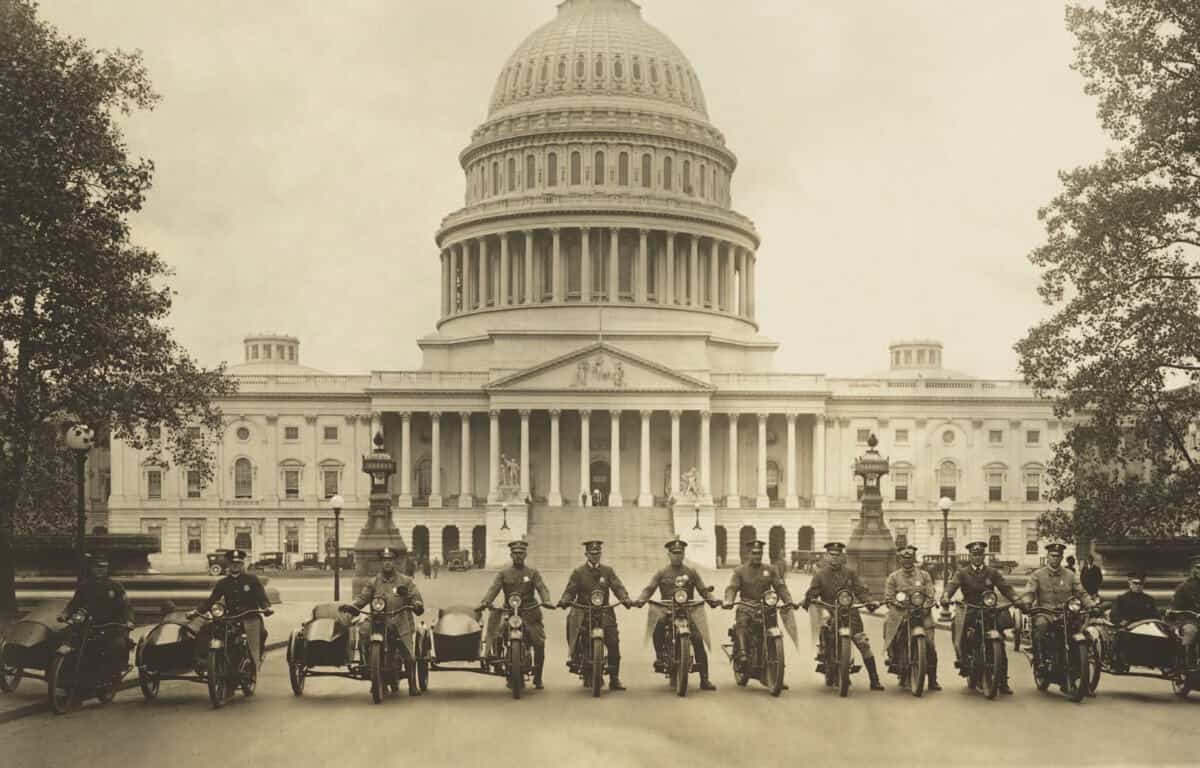

Policemen in front of the U.S. Capitol building in 1922.
A century later
Prohibition lasted “thirteen awful years,” as Baltimore journalist H. L. Mencken dubbed the period. Congress finally repealed the Eighteenth Amendment on December 5, 1933.
But Prohibition’s effects on the country continued long after repeal.
Americans who’d lost businesses, livelihoods, and income weren’t able to make up for what they’d lost. Pre-Prohibition saloons—workingmen’s clubs—couldn’t be revived.
Young William Leuchtenberg could hardly rewind and reclaim the childhood in the country he would have had if enforcement agents hadn’t closed his father’s still.
Prohibition permanently changed individuals’ relationship to the federal government.
Prohibition permanently changed individuals’ relationship to the federal government. It set an alarming precedent: The government could decide to criminalize your business or occupation, pushing you out of the life you’d built for yourself. Many Americans viewed the government with new wariness.
“They lust to inflict inconvenience, discomfort, and, whenever possible, disgrace upon the persons they hate,” Mencken fumed about Prohibitionists, “which is to say, upon everyone who is free from their barbarous theological superstitions, and is having a better time in the world than they are.”
The government—despite its clear failure to achieve the goals of Prohibition—was emboldened to continue intervening in individuals’ choices. Prohibition “pushed the federal government in the direction of policing and surveillance,” says Lisa McGirr, Harvard professor and author of The War on Alcohol.
For “thirteen awful years,” the government cracked down on the economic freedoms of working Americans, while people with social or political power skirted authorities and kept on drinking. Prohibition provided a grim lesson for America that remains true to this day: When the federal government enacts sweeping laws that curtail economic liberty, the laws won’t be felt equally. Well-connected groups will still get their speakeasies and whiskey prescriptions—while working Americans feel the grip of federal regulation close in around them. ![]()
![]()


Gin Rickey
Lobbyist Joe Rickey invented the bourbon rickey in the 1880s in Washington, DC. This gin version, created about a decade later, quickly became the more popular iteration and was a mainstay cocktail at Prohibition-era speakeasies. DC mixologist Derek Brown calls the drink “air conditioning in a glass.” In F. Scott Fitzgerald’s The Great Gatsby (1925), Tom Buchanan serves gin rickeys “that clicked full of ice” on the warmest day of the summer. (Incidentally, blue-blood Tom derisively accuses Jay Gatsby, “Mr. Nobody from Nowhere,” of being a bootlegger—yet Tom clearly has no compunction about drinking gin rickeys. Prohibition is not for people like Tom.)
To make your cocktail: Squeeze and drop half a lime into the glass. Add 2 oz of gin, then add ice. Top with club soda and stir gently.
2 oz gin
Sparkling water
Half a lime
Ice
Highball glass


Grading butter


Anastasia Boden
Senior Attorney


Brittany Hunter
Editorial Writer
Beloved American chef Julia Child learned to cook in France, where butter is indispensable. When she taught her recipes to American audiences in the 1960s, she had a favorite mantra: “With enough butter, anything is good.”
Indeed, whether it’s being spread on a fresh-out-of-the-oven dinner roll or baked into your mother’s famous chocolate chip cookies, butter is the backbone of American home cooking.
And the American butter market is rich in variety—from Vermont’s Cabot Creamery to Georgia’s Banner Butter.
But in one state, butter bureaucrats and their absurd regulations make it difficult for the butter of your choice to make it onto your table.
Wisconsin is widely recognized as the dairy capital of the world. Nicknamed “America’s Dairyland,” the state lures tourists from all over to sample its one-of-a-kind cheese curds, beer cheese soup, and custard.
Yet, instead of allowing these delicious products to speak for themselves in the robust dairy marketplace, Wisconsin officials have gone to extreme lengths to protect in-state brands from out-of-state competition, placing a specific target on the butter industry.
Competition is an essential feature of a free economy. Not only does brand competition give consumers access to a wide variety of goods and services from which to choose, but it also challenges each company to strive for perfection and capitalize on the unique qualities that set it apart from others.
But the Wisconsin dairy industry doesn’t care to compete with “outside” dairies—as Minerva Dairy learned the hard way several years ago.
Minerva Dairy—located in the small town of Minerva, Ohio—is America’s oldest family-owned cheese and butter dairy. Since 1935, it has been churning out artisanal Amish butter. “Our delightful 85% butterfat butter is richer, creamier, and more flavorful than anything you’ve had before,” the company promises. In addition to its popular sea salt and unsalted varieties, Minerva also offers specialty butters like lemon poppy seed butter, pumpkin spice butter, and smoked maplewood butter.
Brother and sister Adam Mueller and Venae Watts (née Mueller) are the fifth generation in their family to make butter. Their great-greatgrandfather Max Radloff started making butter and cheese in the 1890s in—ironically—Wisconsin. Minerva Dairy was founded two generations later by Adam and Venae’s star-crossed grandparents, Lorraine Radloff and Delbert Mueller, who were born into competing dairy families. The Radloffs and Muellers had such competitive animosity between them that the Muellers were rumored to have set the Radloffs’ facilities on fire. It’s no surprise, then, that when Lorraine and Delbert got married, they moved to Minerva, Ohio, for a fresh start.
Adam Mueller has been Minerva’s president since 2010 and takes pride in his work. While Minerva Dairy started humbly, Adam has been able to expand the business by selling products online, as well as working with regional distributors to sell in other states.
He had never encountered any problems working across state lines—that is, until he tried to get Minerva butter on Wisconsin store shelves.
In the 1950s, Wisconsin policymakers implemented laws that forced dairies to jump through costly and burdensome hoops before being allowed to sell within the state. The specifics of the law are ridiculous, to say the least.
To obtain the proper licenses needed to sell butter within the country, the United States Department of Agriculture (USDA) requires dairies to make their products in approved facilities. If interested, companies can also choose to have their butter taste-tested, or what it calls “graded,” but this process is not required by the federal government and is used solely as a marketing tool for bigger brands that can afford to pay to participate. These federal rules are not enough for Wisconsin.
If these arduous rules were in place as a means of keeping consumers safe, that would be one thing. But safety has nothing to do with it.
Wisconsin demands that all out-of-state dairies pay to have each batch of butter independently taste-tested.
For Minerva, which produces small batches of slow-churned butter 14 to 18 times a day, this is an extremely burdensome process, and it’s a poor fit to the company’s model, because Minerva deliberately seeks an artisanal taste that’s different from generic butter.
Even though this is a Wisconsin-specific law, the state does not allow its own butter graders to leave the state. To comply with the law, outside dairies are forced to fly in Chicago-based USDA graders and pay for all their travel costs.
This isn’t a one-time or even an annual procedure, either. The law demands that this process take place weekly.
But the law doesn’t stop there.
After receiving its grade, Minerva would then need to create Wisconsin-specific labels for its butter. But Minerva Dairy sells its products both online and through regional distributors that cover several states. So it cannot easily predetermine which batches of butter might ultimately be sold in Wisconsin, creating yet another logistical difficulty.
If these arduous rules were in place as a means of keeping consumers safe, that would be one thing. But safety has nothing to do with it.
Instead, the process is meant solely to determine the taste quality of each brand based on state-created criteria. Each butter grade is a composite score based on 31 separate butter characteristics, all meant to determine if the butter is “highly pleasing,” “pleasing,” or “fairly pleasing.”
In other words, this entire system is based on where the particular government official doing the testing thinks the butter falls on the pleasing spectrum.
Taste is subjective. What tastes good to me may not taste good to you. Yet this law purports to tell out-of-state butter brands that they may sell their product in Wisconsin only if the flavor comports with state-established taste standards—if it pleases the crown, so to say.
This is as ludicrous as letting the federal government determine what clothing you could wear or what haircut you could have, based on their officials’ preference.
No other state has laws like this. And when Adam Mueller gazed into this sea of red tape, he could scarcely believe it was real.
Wisconsin’s law means that the butter has to meet the quality standards of commodity butter, Adam explained. “That’s a problem for us,” he added, “because we are not a commodity butter.”
With such a burdensome and costly process, it should surprise no one that only the biggest out-of-state brands are able to submit themselves to this regulatory procedure without suffering setbacks. The grading process might even make sense for their business models: They want the Wisconsin stamp of approval that says their butter lives up to the taste standards of other butters.
But that is the exact opposite of what Minerva Dairy wants. Their butter isn’t like every other butter: It has a one-of-a-kind flavor that sets it apart from others on the market.
“We are an artisanal butter that has a higher butter fat, different salt contents, different types of texture, different types of flavor profiles,” Adam said. “I don’t want to pass the commodity standards that Wisconsin is enforcing, because I am above the commodity standards. We are able to sell our butter in every other state. Wisconsin is unique in its restrictions, and that is blocking interstate commerce.”
Put simply, this rule exists to benefit one very specific group of people: big butter.
The Constitution’s Commerce Clause protects a national, interstate market and the free exchange of goods. Wisconsin is not allowed to create barriers that unduly interfere with the exchange of goods across states.
Not only is this law unconstitutional, but it also robs dairy farmers like Adam and Venae of their right to earn a living and violates their Fourteenth Amendment rights to due process and equal protection under the law.
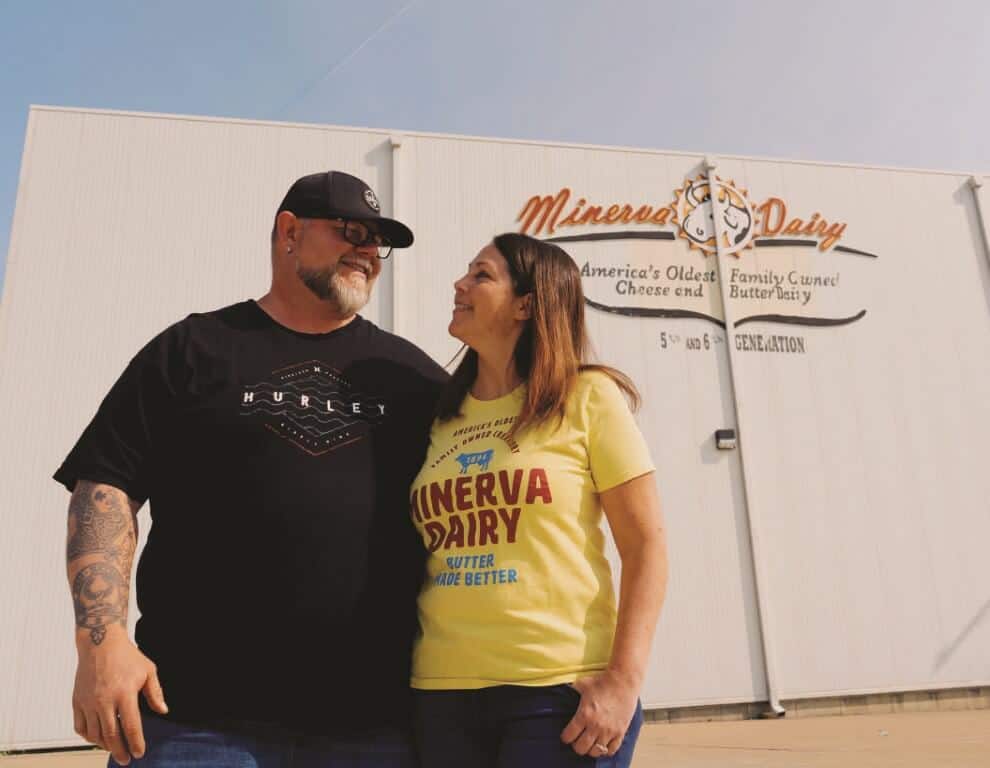

Venae Watts (née Mueller) with her husband Joseph at Minerva Dairy.
In 2017, Minerva Dairy decided to fight back against the law—with Pacific Legal Foundation by the Mueller family’s side.
As PLF attorney Joshua Thompson said at the time, “Wisconsin’s butter-grading mandate scores a failing grade for being unnecessary, unreasonable, and unconstitutional.” He argued that Wisconsin was engaging in illegal economic protectionism. “The proper purpose of economic regulations is to protect public health and safety,” Joshua said. “In contrast, Wisconsin’s grading mandate serves to shield favored businesses, while harming competitors and the general public by restricting consumer choice.”
Anti-competitive laws enacted on behalf of large corporations to crush competition from smaller businesses and artisans have no place in a free market economy. By making it more difficult for small buttermakers to compete, Wisconsin is lowering the variety and quality of butter choices for Wisconsin consumers.
In short, everyone loses except for big dairies.
We wish we could say this was a fight PLF won. The case of Minerva Dairy v. Brancel was an egregious case of government violating a working family’s economic liberty. We were proud to represent Adam and everyone at Minerva Dairy in their fight to defend their rights and their butter business.
But sometimes even a strong case loses in the courts.
A Wisconsin federal court ruled against Minerva Dairy’s claims and upheld the state’s unconstitutional law. The court rejected the Fourteenth Amendment claims by stating that the law is a “rational” way of protecting consumers.
By making it more difficult for small buttermakers to compete, Wisconsin is lowering the variety and quality of butter choices for Wisconsin consumers.
Nothing could be further from the truth: This grading has no discernable value for consumers. Taste is subjective: Some people prefer Kerrygold and others favor Land O’Lakes. Minerva has been churning a uniquely creamy butter since 1935. Generations of Muellers have sold Minerva butter to customers who like its taste. How are customers protected by having government officials grade the butter’s taste? And why should the company pay for that government taste-tester?
Instead of protecting consumers, mandatory grading only drives up costs and places a stamp of inferiority on some perfectly good products. These unnecessary laws also keep small and artisanal buttermakers out of business.
As for the Commerce Clause claims brought up in the lawsuit, the court ruled that a plaintiff must show that the law specifically discriminates against out-of-state commerce, not just show that the law burdens it.
Minerva Dairy is the kind of business you want to see succeed in America. They’re a creative, fun, family company rich with history—and they make incredible butter. When Adam and Venae were kids, they got rolls of butter in their Christmas stockings and ate butter sandwiches after school. Now they each have families and are raising 12 kids between them—kids they hope will continue the traditions of Minerva and become the sixth generation of buttermakers in the family.
This is a family that knows its butter—and they’ll keep on making butter the way they always have, despite Wisconsin regulators’ attempts to inhibit economic liberty and restrict consumer choice.
Likewise, PLF continues to fight for economic liberty in cases where entrepreneurs face burdensome laws and regulations. We’ve referred back to the case of Minerva Dairy in recent filings—because even when we don’t win a case, our clients’ stories advance the cause of liberty. ♦


Oatmeal Lace Cookies
Mrs. Fields calls oatmeal lace cookies “the church of cookies” because they look like stained glass windows. This recipe will make a lot of cookies—so use it when you’re gathering together with friends or family. Nothing is better to share with loved ones than a tray of crisp, buttery cookies.
To make your cookies: Preheat oven to 375 degrees. Line your baking sheet with parchment paper. In a saucepan over medium heat, heat butter and brown sugar. Stir until butter is melted and the mixture is smooth. Stir in oats, egg, flour, salt, and vanilla extract, then remove from heat. Use a teaspoon to drop balls of cookie batter onto your prepared baking sheet, leaving two inches of space between cookies. Bake for 5-7 minutes, until golden brown.
2 sticks (or 16 tbsp) butter
2 ¼ cups light brown sugar
2 ¼ cups rolled oats (not instant)
3 tbsp flour
1 tsp salt
1 egg lightly beaten
1 tsp vanilla extract
Secure Pacific Legal Foundation’s lasting leadership in defending liberty


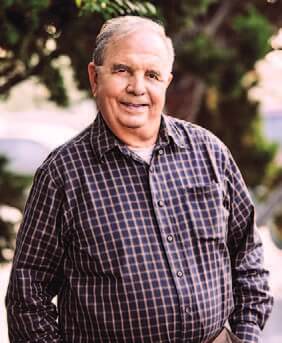

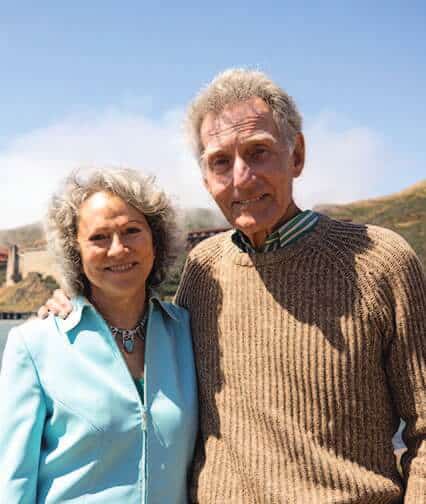

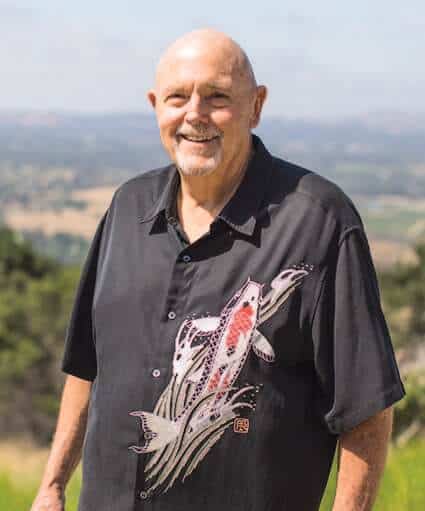



Thanks to you, for the past 49 years, PLF has been there for everyday citizens who had nowhere else to turn when threatened by overreaching government. Indeed, you’ve helped build PLF into what we are today: a force to be reckoned with.
But what about tomorrow? Where will people go years from now when their rights are crushed by the government’s excessive quest for control?
As a Legacy Partner, you will secure PLF’s lasting leadership in defending liberty so succeeding generations will know, cherish, and live the promises of our Constitution.
Will you join us in the long fight for years to come?


We invite you to join our Legacy Partners, a group of dedicated supporters who have added PLF to their will, trust, or other estate plans.
For assistance, contact Jim Katzinski, Gift Planning Officer, at (916) 288-1395.





